I did a follow up mission to my
Jool Orbital one described previously in this thread. As a reminder, the goal of
Jool Orbital was to use a single interplanetary craft to deliver 5 probes to the surface of each of Jool's moons, and additionally probe Jool's atmosphere with a detachable drop tank equipped with scientific and comm equipment, chutes, small probe core, etc. The mission was successful in everything but one thing; put a probe down on Tylo. As it turned out, Tylo is the toughest of Jool's moons to land on (indeed, maybe the toughest in the game, more about it later), and the little probe just didn't have enough delta-v to pull it off, so I left it in a 50x50 km orbit instead. The probe had a docking port that was used to bring it to the Jool system attached to the interplanetary craft, which left open the possibility of a future refueling effort, hopefully allowing it to land.
So I planned another unmanned mission to Jool. There were three mission goals:
- bring a Tylo probe refueling craft in a position from where it can enter Tylo's orbit and refuel the Tylo probe orbiting there;
- put an ocean floating probe in a Laythe ocean;
- leave the interplanetary stage in orbit of Laythe with, hopefully, enough fuel left to be of help to future manned missions to Laythe.
Here's how it all went down.
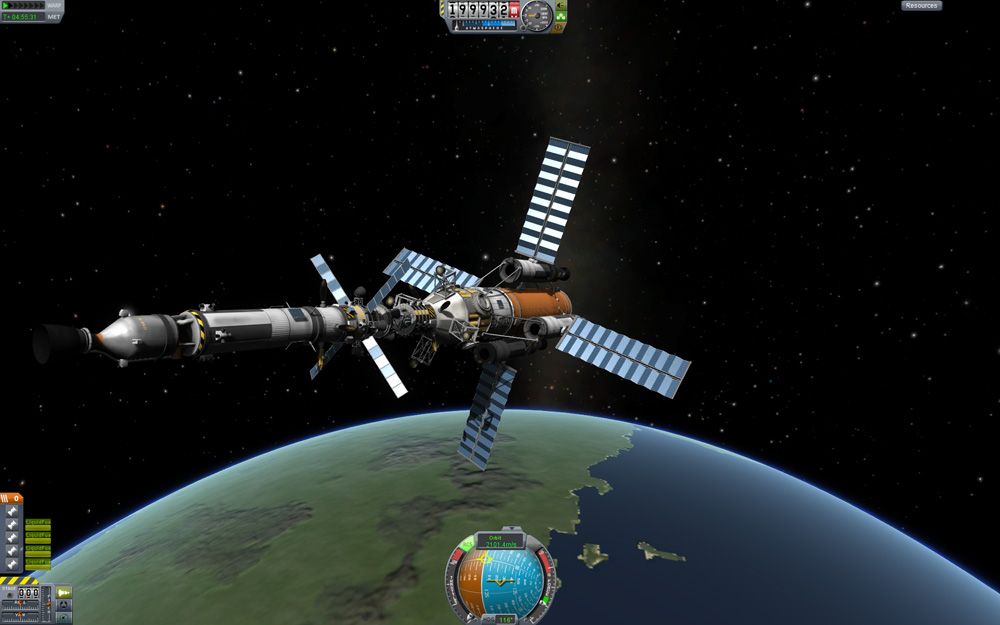
First, I brought the interplanetary stage into orbit and docked the Tylo probe refueler with it. The interplanetary stage was similar, but simplified a bit since this time around I didn't need it to carry 5 probes or drop the aft tank into Jool's atmo. The very long forward bit is the Tylo refueler.
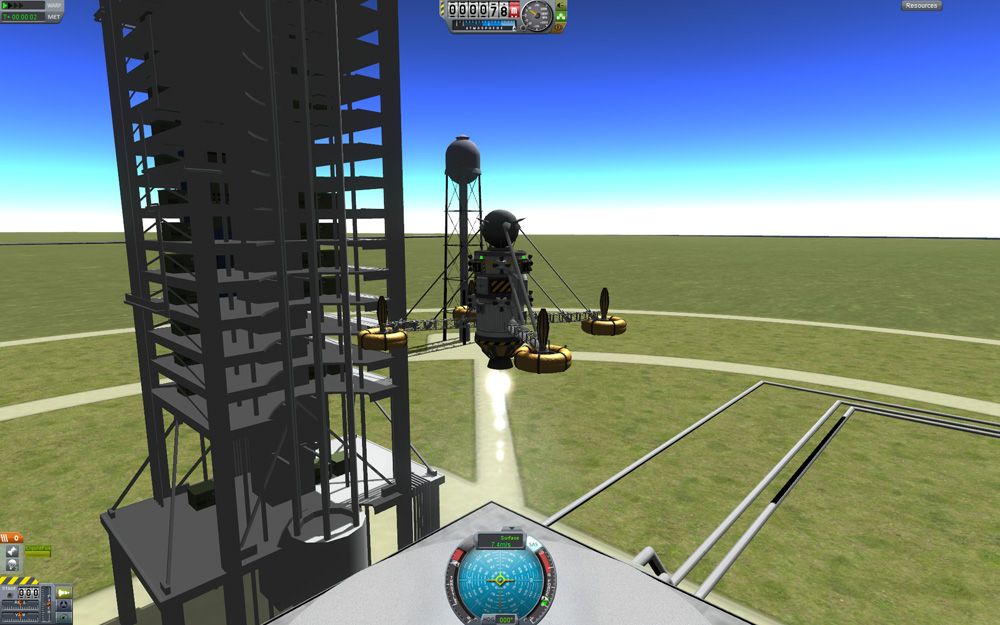
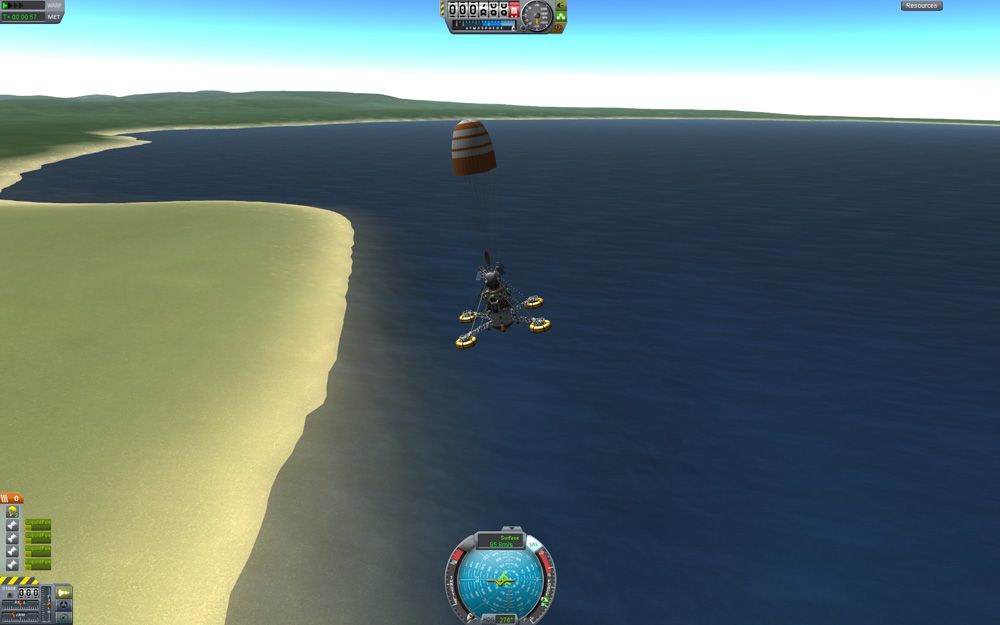
Then I started playing with various design ideas for an ocean probe, testing it on Kerbin.
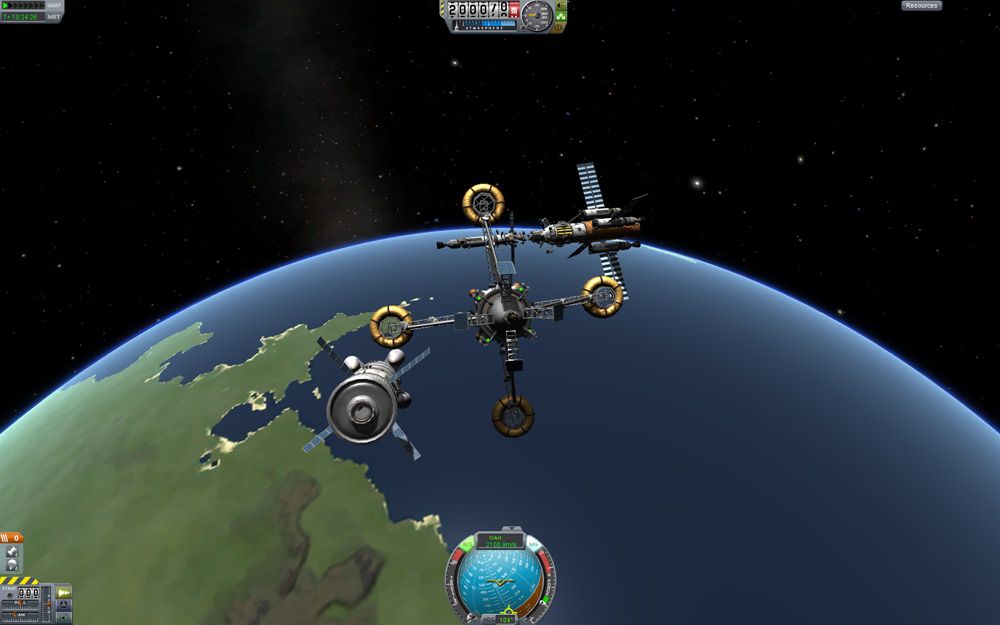
... and then it was time to dock the thing to the interplanetary stage. To the aft docking port, to be exact - which meant being careful that it's angled so none of the probe's "flotation devices" aren't in the way of the main nuclear engine's exhaust.
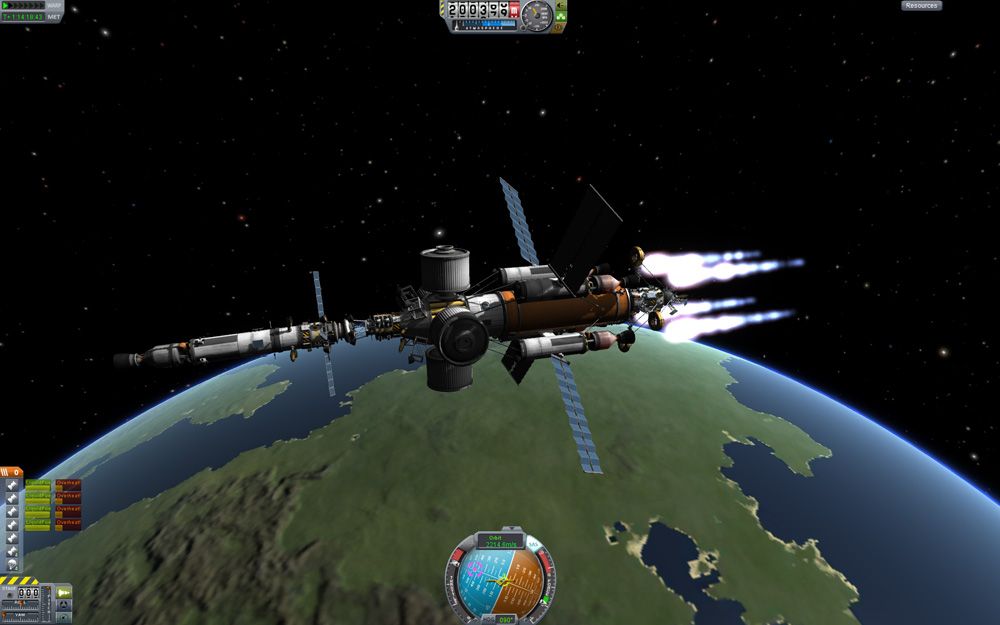
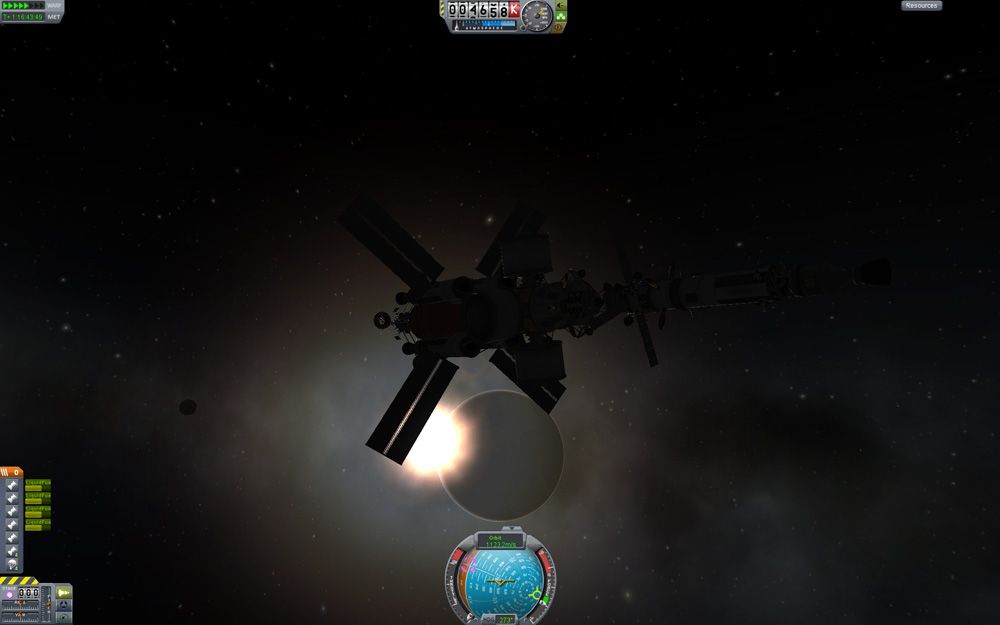
Another interplanetary ship leaves Kerbin.
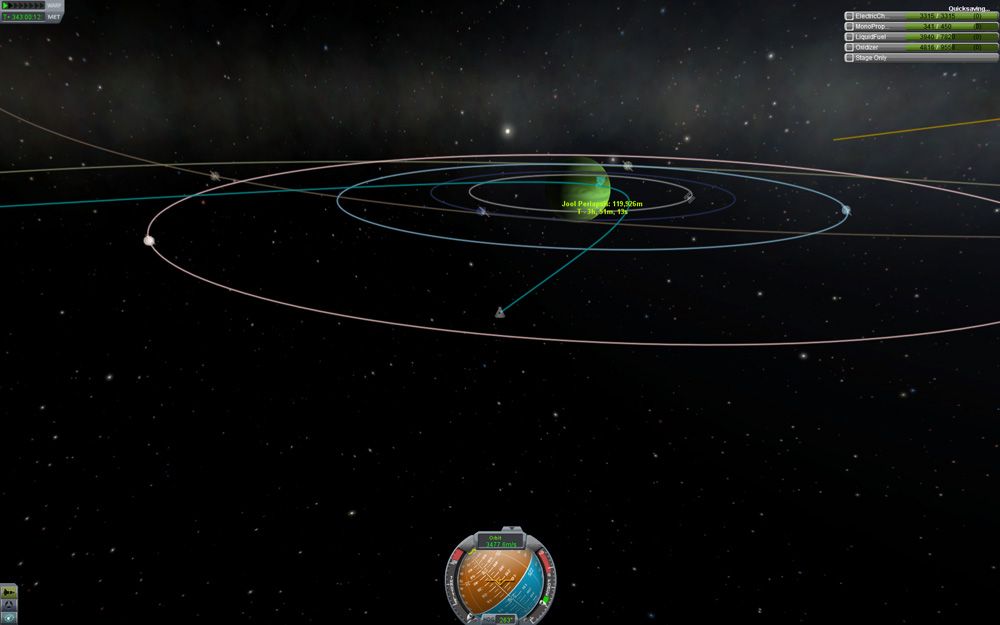
What made this mission special is the fortunate timing of my Jool aerobreaking maneuver. After aerobreaking, I had an encounter with Laythe. I decided to utilize that, which paid off in fuel later on. This time around I was also more careful to fix inclinations early on so from the moment of aerobreaking onwards I was on the exact same orbital plane as Laythe / Tylo.

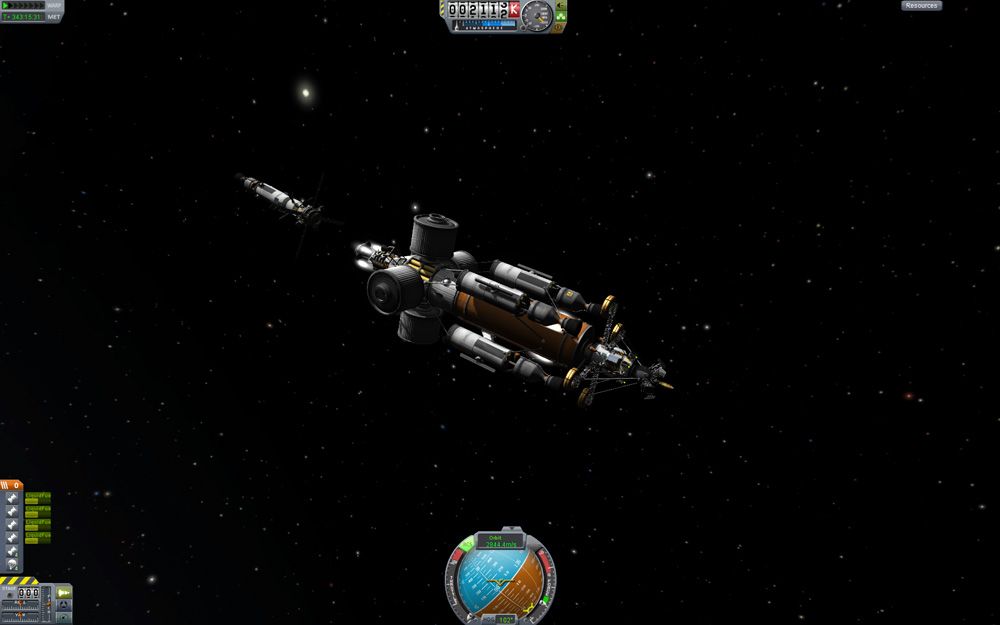
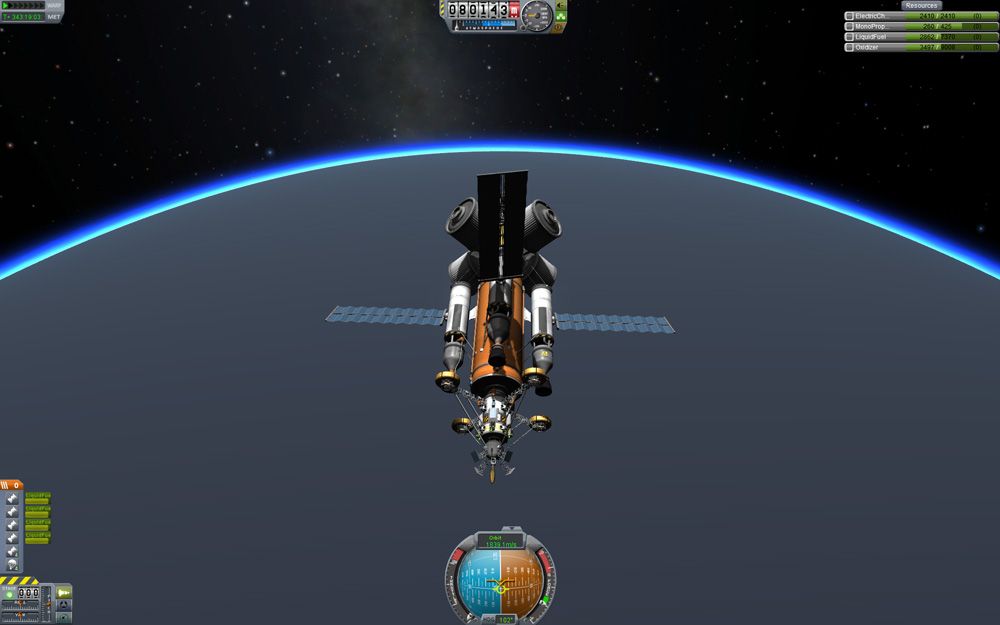
On approach to Laythe, I decoupled the Tylo probe refueler, leaving it on a fast flyby course. Then I set the periapsis of the
Laythe Orbital low enough for aerobreaking, and had it enter Laythe Orbit.
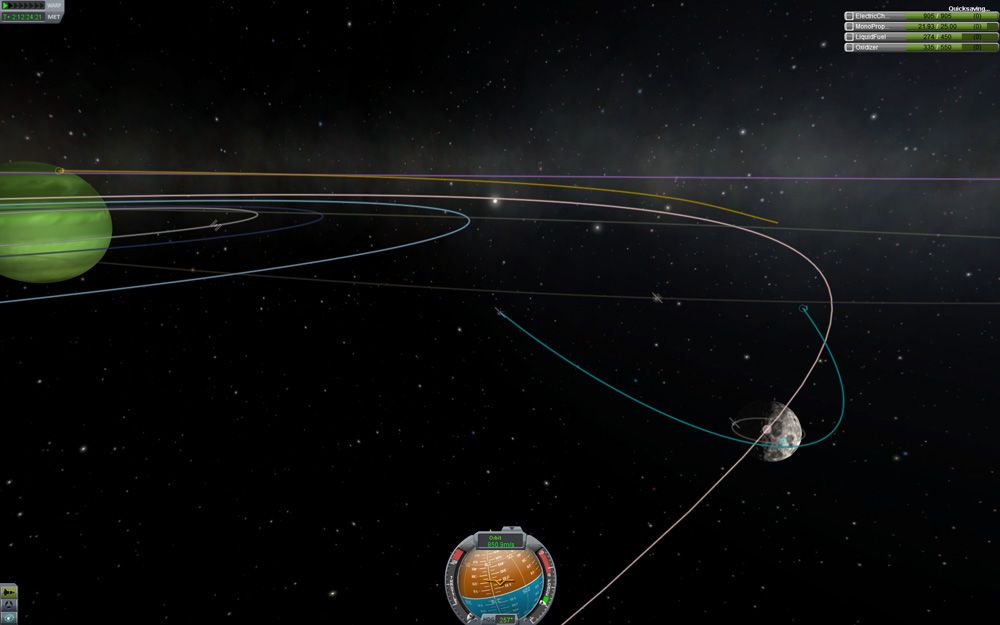
With the
Laythe Orbital safely inserted into an 80x80km orbit, I turned my attention to the Tylo probe refueler. It was left on a fast flyby and was now close to Laythe escape. A relatively short burn put it in a large elliptical orbit over Jool, which made a low-consumption transfer to Tylo possible. This proved essential later on.
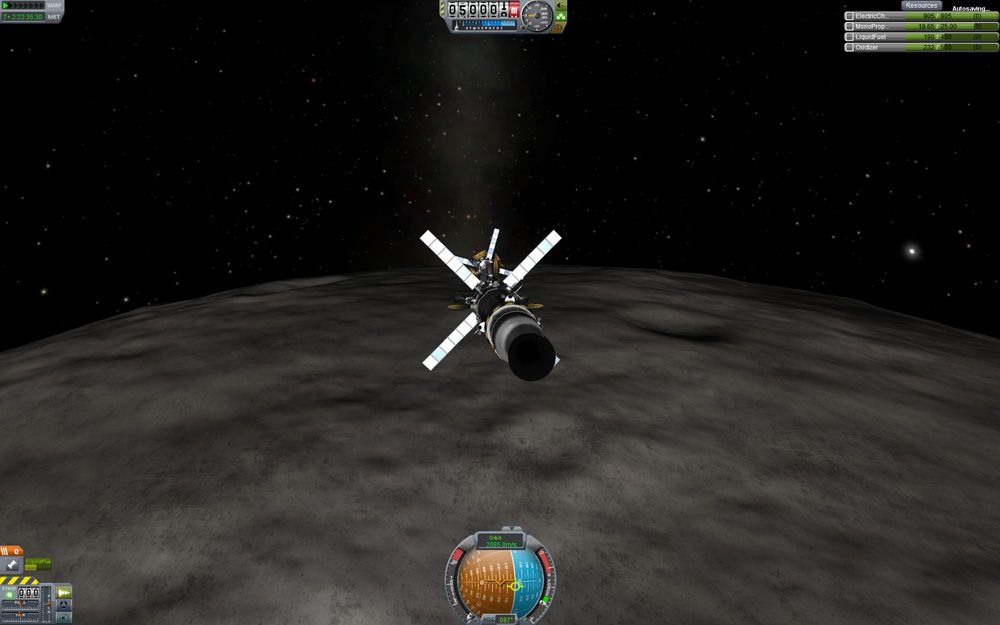
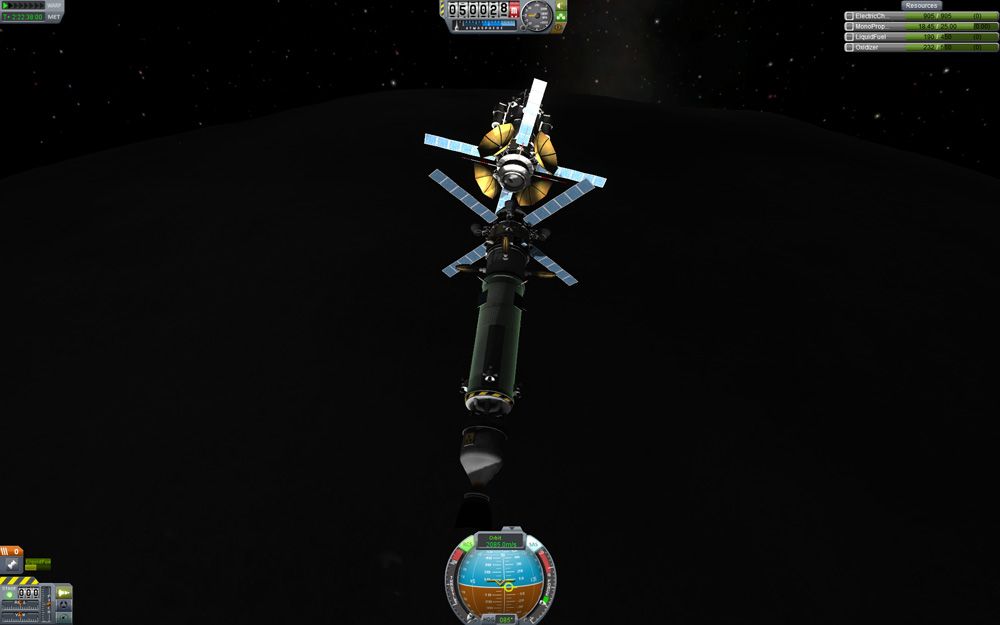
Once in Tylo's orbit, the refueler intercepted it's target and docked with it.
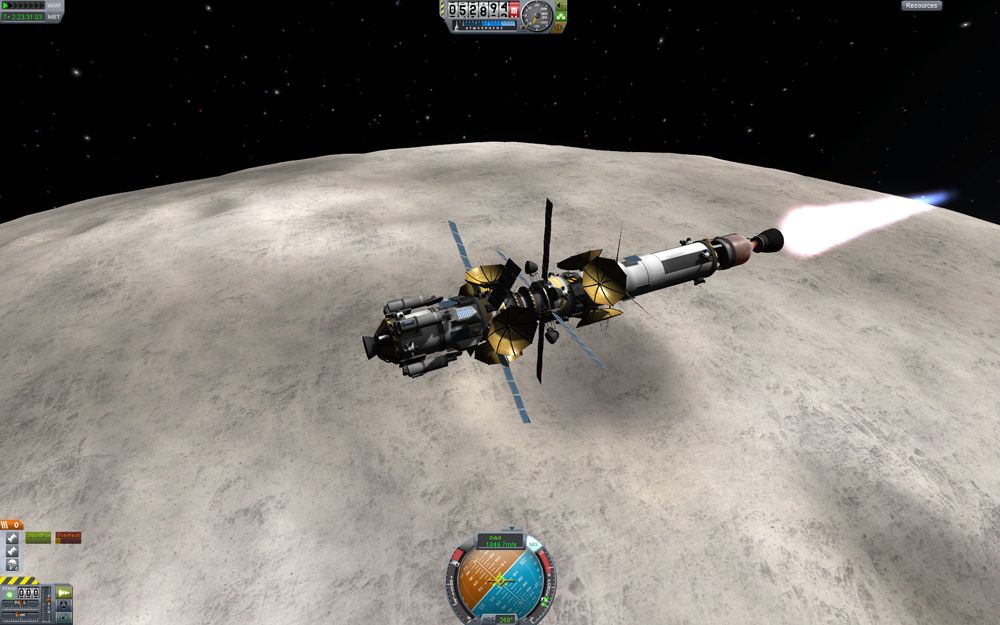
Once I was happy with the selected landing spot, I filled the probe's tanks to capacity, and used the remaining fuel aboard the refueler to do a deorbit burn.
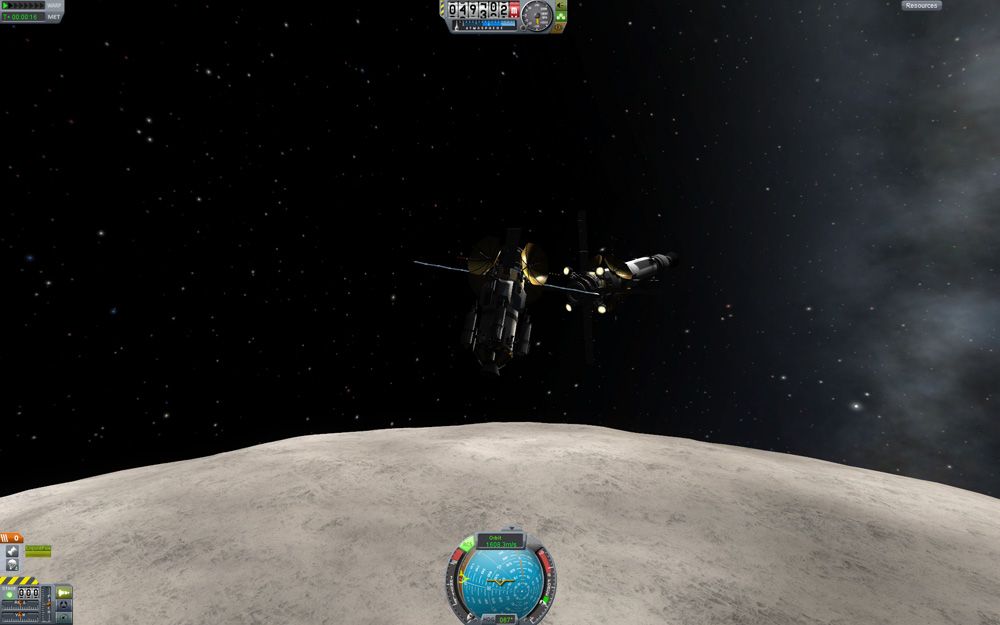
Then I decoupled the probe from the refueler, leaving it to crash on Tylo's surface. This part couldn't be helped - Tylo is easily one of the toughest places to land on in the game, and in fact this probe would never have made it down there in one piece had it not been for the refueler making that deorbit burn for it. Tylo is kind of the opposite of Eve, it hates visitors. Eve loves them, by requiring comparatively low amounts of delta-v to reach it, and by having the ever so helpful atmosphere handing out free delta-v like it's candy. It also makes landings easy since parachutes work. The downside is that Eve loves visitors so much it does it's best to hold on to them forever once they're on the surface. Opposite to Eve's psychopathic levels of hospitality, Tylo's the grumpy neighbor that would just as soon you didn't come. It takes tons of delta-v to reach it, and once in a 50km orbit, you'll still need to kill over 2 km/s to safely land. This is because it's almost as big as Kerbin, and has no atmosphere; onboard instruments show 80% gravity to that of Kerbin, which makes it's gravitational field almost three times as strong as Duna's. Tylo really doesn't help you land on it in any part of the mission - it makes your life difficult in every aspect of it. If anyone is planning on landing there, I recommend using a large lander, landing a small probe is really difficult there.
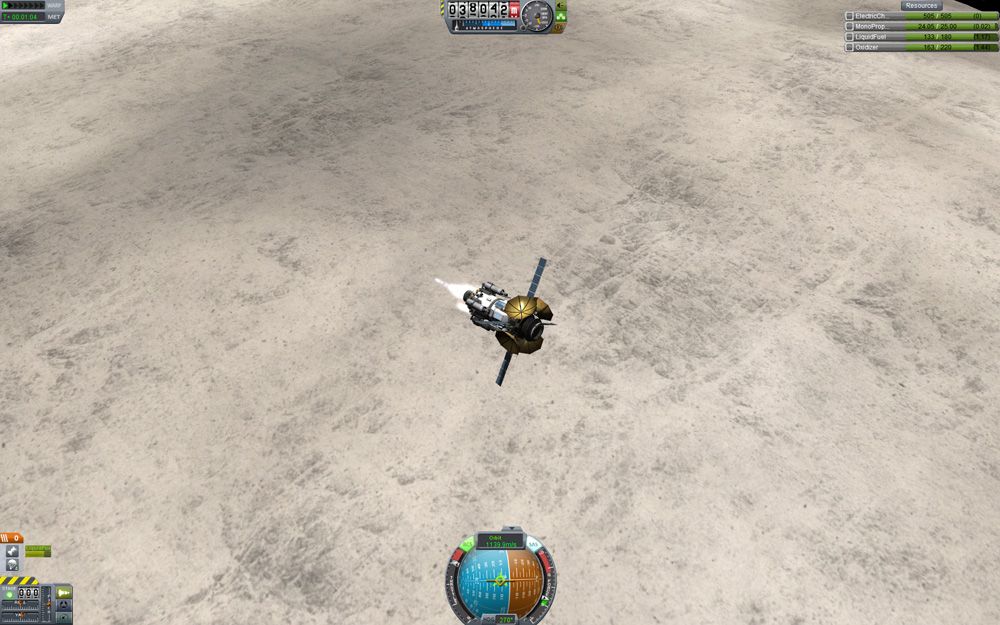
Due to Tylo's high gravity, this was my first landing where the engine operated for the entire way down. I even used the RCS to help it, for what little that was worth. RCS is painfully inadequate when it comes to fighting Tylo's gravity, and a small probe with 180 fuel capacity is very, very tricky to bring down safely here.
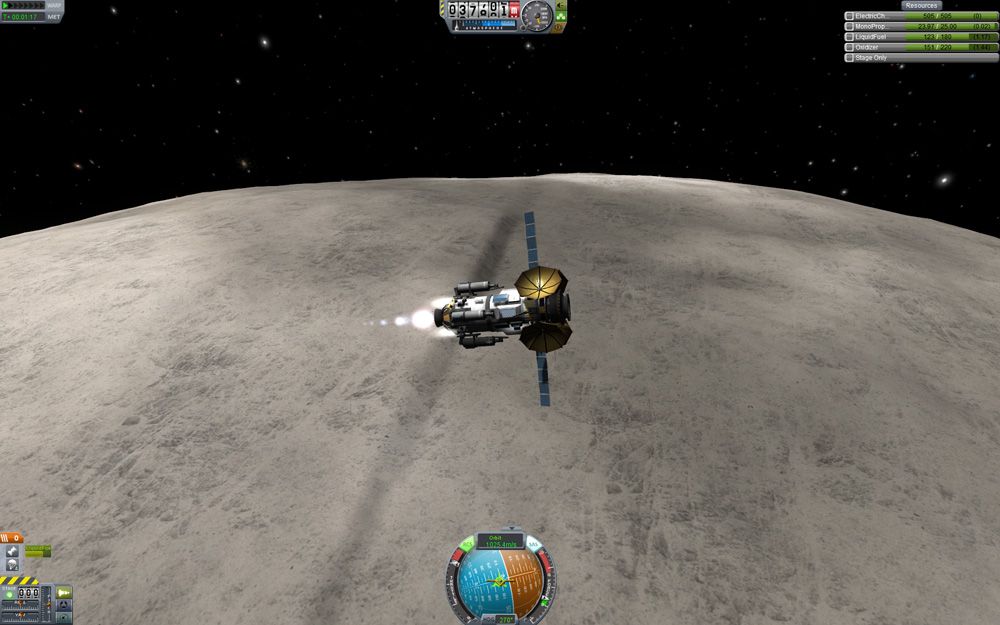
A view of the Great Wall of Tylo, as I call it. If you look better on the map view, you'll see it's basically a large slope that goes all around the moon, more visible on some places and less visible in others. In truth I have no idea why a large slope would circumvent an entire moon like that, but I'm sure there are people with bizarre haircuts over on History Channel with their own theories on this.
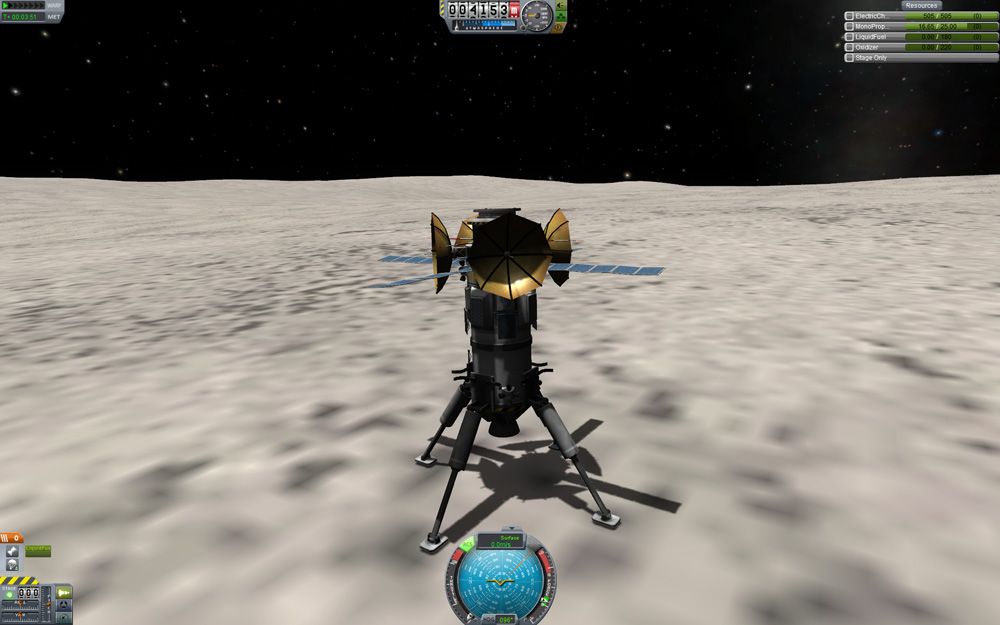
After running out of fuel a meter or so above surface, I was happy the probe was equipped with heavy legs. Anything less would have had unfortunate results. The probe nearly tipped over as it is, but eventually it settled down on the surface. Victory!
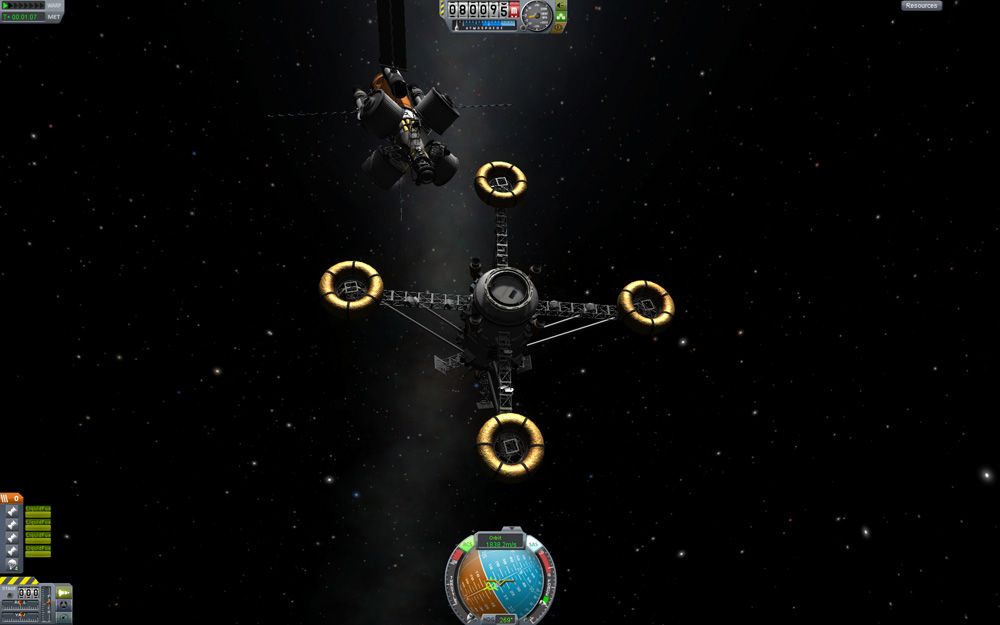
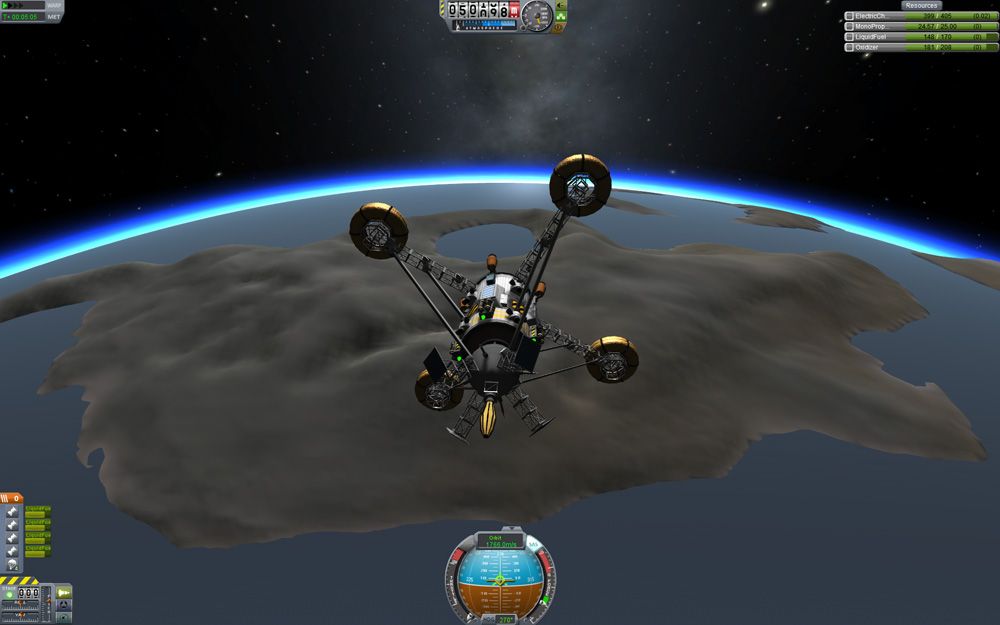
After a short celebration at the KSC, it was time to focus back on the
Laythe Orbital, and land the ocean probe still docked to it down on Laythe.
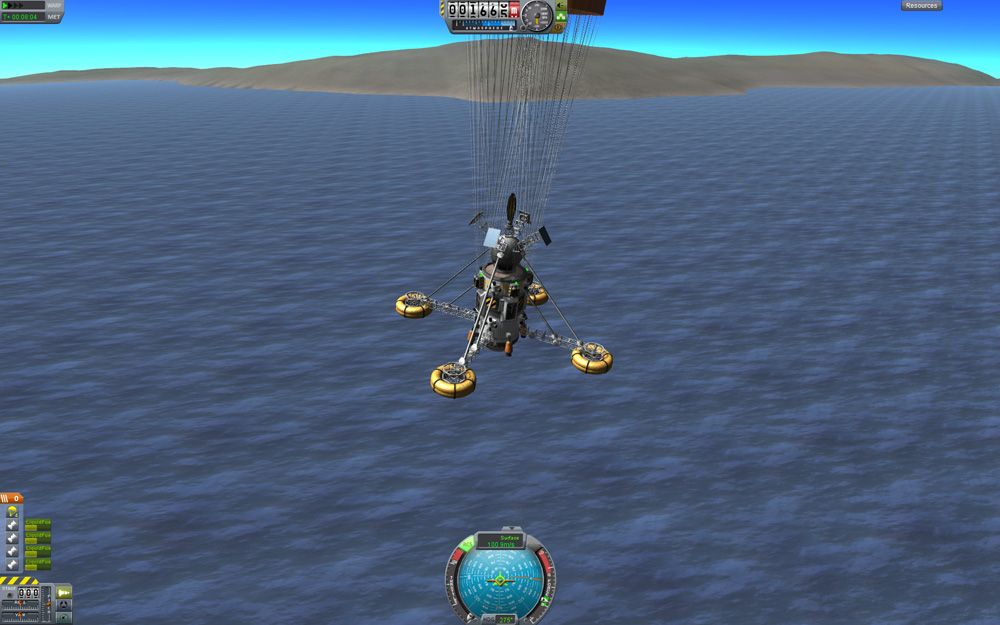
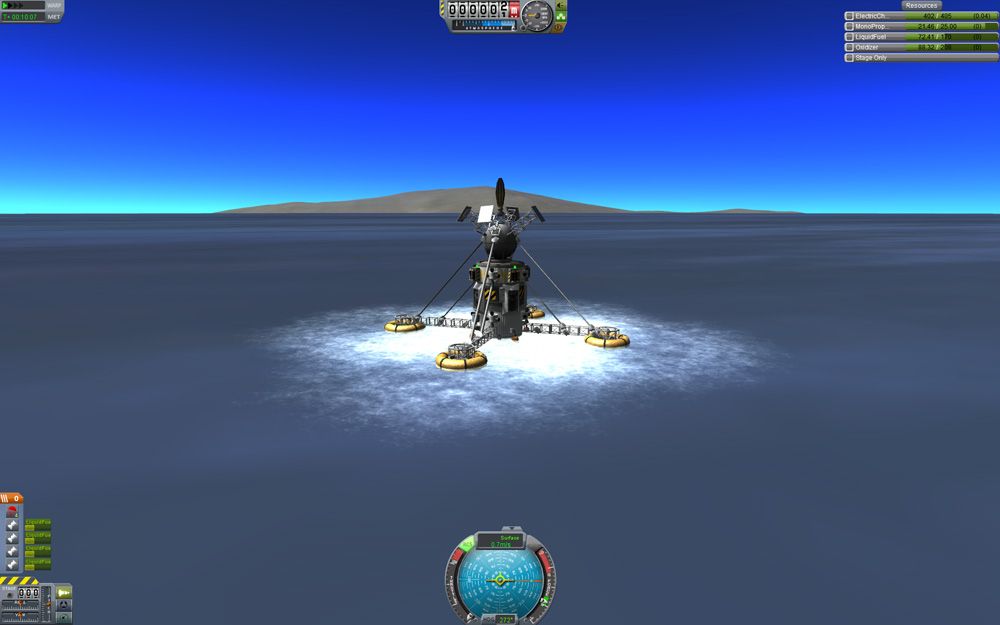
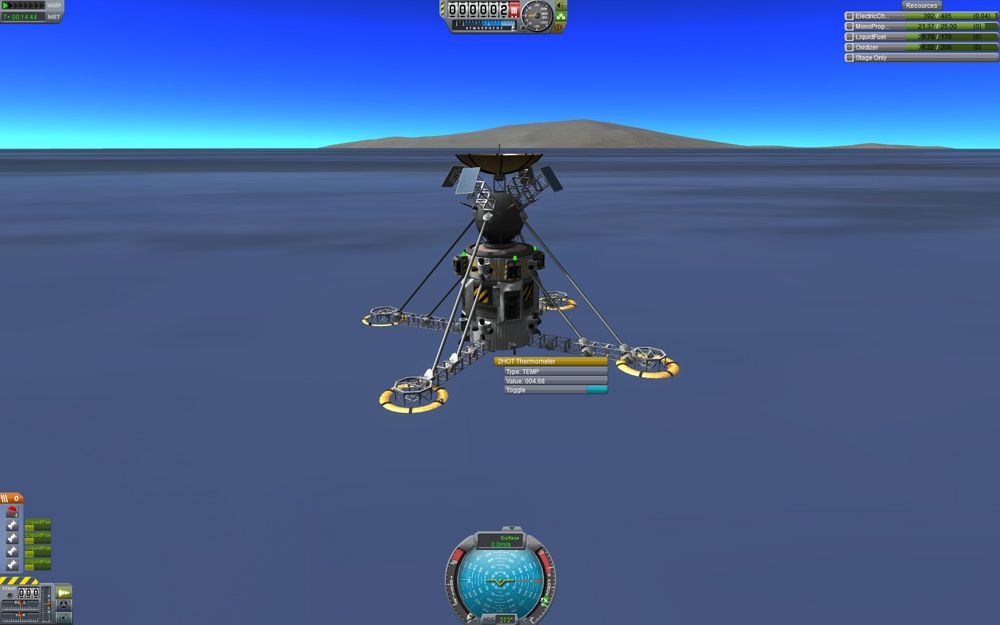
This part of the mission was far easier than the Tylo part. Laythe is quite more forgiving, with it's lower gravity and atmosphere that makes chutes useful. The probe floated upwards just like during tests on Kerbin. Onboard instruments show a temperature of around 5 degrees at sea level. Another probe I landed earlier landed on an island on a hill some 1600m high; temperatures recorded there were -6. This does answer the question of why Laythe's oceans aren't frozen.. but I still wouldn't go swim in them without a space suit

So, I'm happy to report all parts of the mission were a complete success. I now have at least one probe on each planet/moon in the Kerbol system, and a ship in orbit of Laythe with almost 3000 units of liquid fuel along with it's accompanying oxidizer, which will be useful for a future manned mission.

